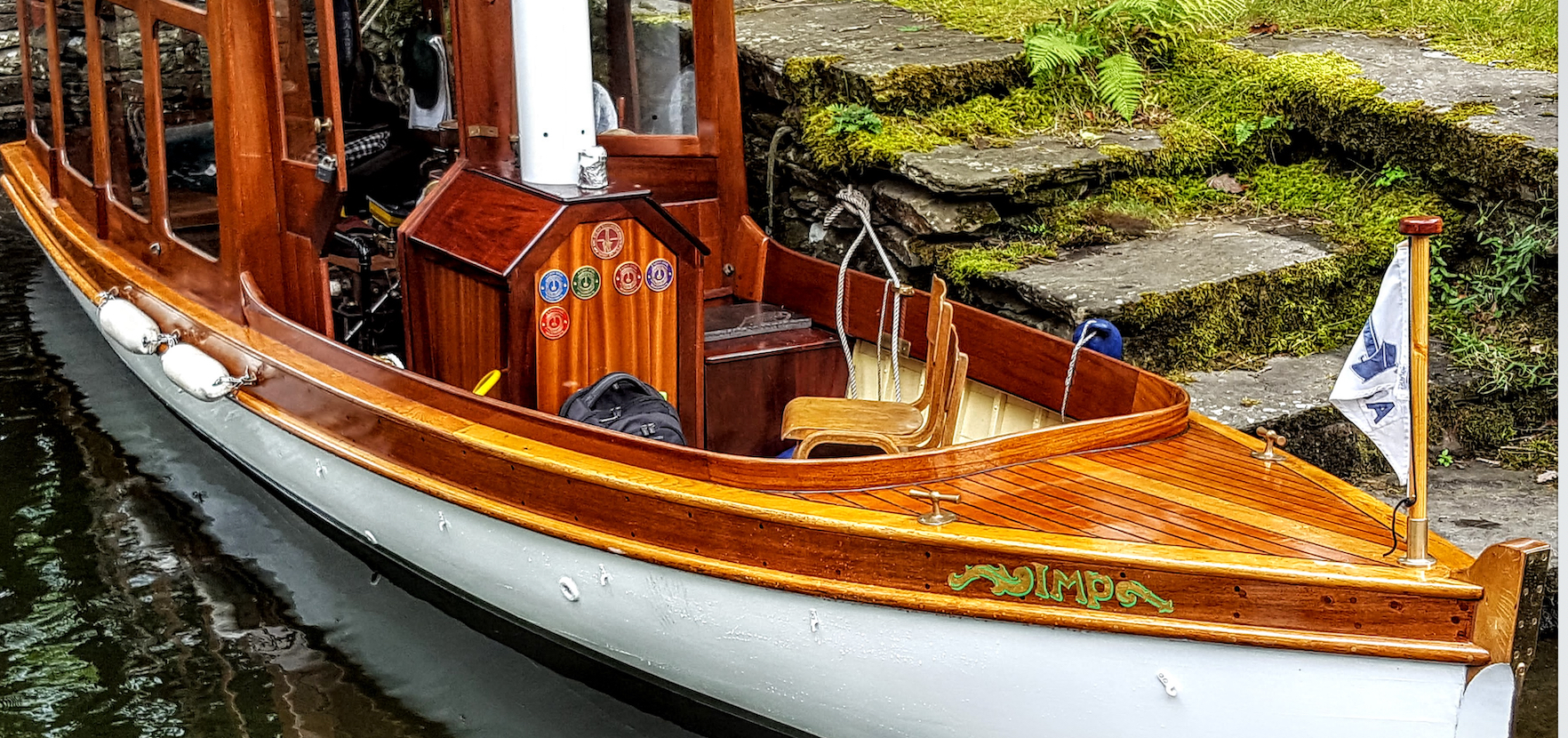
Imp is a long standing and regular sight to be seen on her home waters of Windermere in the English Lake District. Originally built in 1912 by Borwick’s Boatbuilders of Windermere she had an internal combustion engine and made up the numbers in the huge pre-war fleet of small launches to be see on the lake at that time- indeed she typifies the end of the era of Edwardian elegance that is so inextricably linked to Windermere and provides so much of the attraction to visiting tourists and the affection of locals alike.
Bought by an engineer in the late 1980’s she was restored following a long spell underwater next to the ancient stone jetty on the western shore of Windermere between Cunsey and Rawlinson Nab.
As her new owner was employed in the business if making sure our power stations didn’t run out of steam any time soon the only possible route for restoring her was to have her as a steam launch, and it is in that guise I came to see Imp a few years ago.
She came to us in early 2017 needing ‘a bit of attention to a couple of frames’. Under careful scrutiny in the yard and with a soft pen in hand it was found that she had some very serious issues with her planking at the bow- in fact, on placing a mark of pen on one soft area the tip went through the plank!
Clearly, she needed a lot more than just a couple of frames! So we set about assessing the damage, carefully removing rotten planking sections and inspecting the frames. It was found that the first 5ft of the boat needed a complete rebuild with terminal rot in the planking below the waterline, the stem knee almost totally consumed with rot and the back face and rabbet of the stem also displaying a lot of rot.
The frames in the bow section had all cracked and started to rot as water and excessive movement had weakened them. The cracking from movement worried us the most, and along with the twist in the stem it led us to discover that the stem and steam knee had no through fixings at all and they could move independently to each other, with only the planking tying them together.
It was decided to manufacture a larger stem knee- and rather than use a grown knee of Douglas fir as per the original, we laminated up a knee section and let this into a right angle frame. We replaced the first three feet of the hog and removed the stem. It was also discovered that the rabbet where the plans land onto the stem had intersected the joint between the stem knee, hog and stem and this had allowed water to track along the hog and up the back of the stem for years- with no fixings to keep things tight it had rapidly developed into a large mass of rot. To remedy this, the stem was removed and a new bottom section scarphed onto it, this was installed onto the new stem knee and we machined and installed new stem bolts of bronze all the way down the stem, through the forefoot and also machined and installed new bronze keel bolts through the new bottom leg of the stem knee. A floor timber was also added as the twist on the planking, especially the oversize garboard, is extreme on Imp.
We removed around 12ft of garboard either side of the keel and replaced with new locally sourced larch timber- along with shorter sections of planking on every plank working towards the stem. New steamed frames were installed using locally sourced Oak and then all was fixed through with copper nails and roves.
Installing the floor timber created a small void space, and so this was filled with a pitch based tar compound.
A floor timber was also installed under the boiler where the trailer supports had caused damage in the past, and to try and alleviate some of the pressure on the hull onto the keel the wide floor timber will make sure she keeps her shape on this area of high stress.
The boat was sanded over all surfaces, new timber treated with Cuprinol, high quality marine paints applied above and below the waterline, brightwork around the gunwhales was sanded and new Deks Olje applied and new brass stem band and stem head detail manufactured and installed.
We came up with a suitable design for a new signwritten name and we applied the painted and gilded details prior to launch in August 2017, just in time for the annual Steam Boat Association rally on Windermere where she was in good company. After a day being afloat she had stopped taking up and her new planks had fixed the old problem of having a permanently wet bilge as she was a dry boat- apparently for the first time in a very long time. Her owner was very happy!
We are very proud to have given this historic little boat a new lease of life and expect to see her out on the lake at every opportunity looking very smart in her new period-correct appearance.

